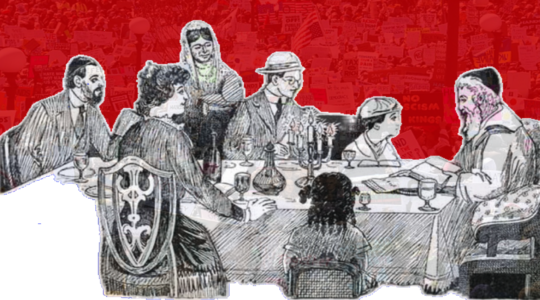The final chapter in the three-decade saga of the rescue of Ethiopian Jews was thought to have been written in August 2008, when the last official airlift landed in Israel. But controversy, charges and counter-charges go on — now focused on the remaining Falash Mura, those Ethiopians who claim to be descendants of converts from Judaism and who seek to make aliyah to Israel.
It is a sad, complicated and ongoing story of those who feel trapped — from the Ethiopian families who claim they seek reunification with relatives in Israel to Israeli officials who say that no matter what they do, they cannot seem to close the stream of would-be immigrants.
Are thousands now languishing in Ethiopia, with little aid or interest from Israel or organized diaspora Jewry, as activists contend? Or is there a seemingly endless list of Ethiopians who leave their homes and come to Gondar in the hope of being brought to Israel and a better life, even though they have no ties to or interest in Judaism, as the establishment groups maintain?
The fate of those left in Ethiopia is in large part controlled by Israeli politics in general, and more specifically the attitudes of the Minister of Interior, who determines policy. And this past spring, under the incoming Netanyahu government, Eliyahu Yishai of the Shas Party indicated a desire to change course and reopen immigration for the Falash Mura.
Many thought that meant bringing the 3,000 applicants deemed ineligible for aliyah by Israeli authorities under the previous government. But a new list of more than 9,000 names provided by activists is now being discussed by Yishai. (One Israeli official speculated that eventually the list will include all 77 million inhabitants of Ethiopia.)
A health center in Gondar that had been operated by the American Jewish Joint Distribution Committee closed last year. Several hundred people in need of hospitalization were transferred to local medical facilities, with expenses paid by the JDC.
Others, who left their villages and came to Gondar in hopes of settling in Israel, are given aid and education by representatives of the North American Conference on Ethiopian Jewry (NACOEJ), which accuses the Joint, and Israel, of abandoning the Falash Mura. Meantime, the establishment accuses NACOEJ of manipulating poor Ethiopians by encouraging them to leave their villages for Gondar, creating a new cycle of people hoping to move to Israel.
At present, the JDC, which faces additional major budget cuts this week, says it will reopen the clinic if Jerusalem comes up with the $250,000 necessary. The activists insist many lives are at risk if the clinic does not reopen; establishment officials say these are exaggerations and they are weary of another round of debates and accusations.
All that is clear is that an inspiring moment in Zionist history — the rescue and resettlement in Israel of an ancient branch of Jewish life in Africa — has been reduced to an ugly squabble about the authenticity of the remaining Falash Mura.
The New York Jewish Week brings you the stories behind the headlines, keeping you connected to Jewish life in New York. Help sustain the reporting you trust by donating today.




